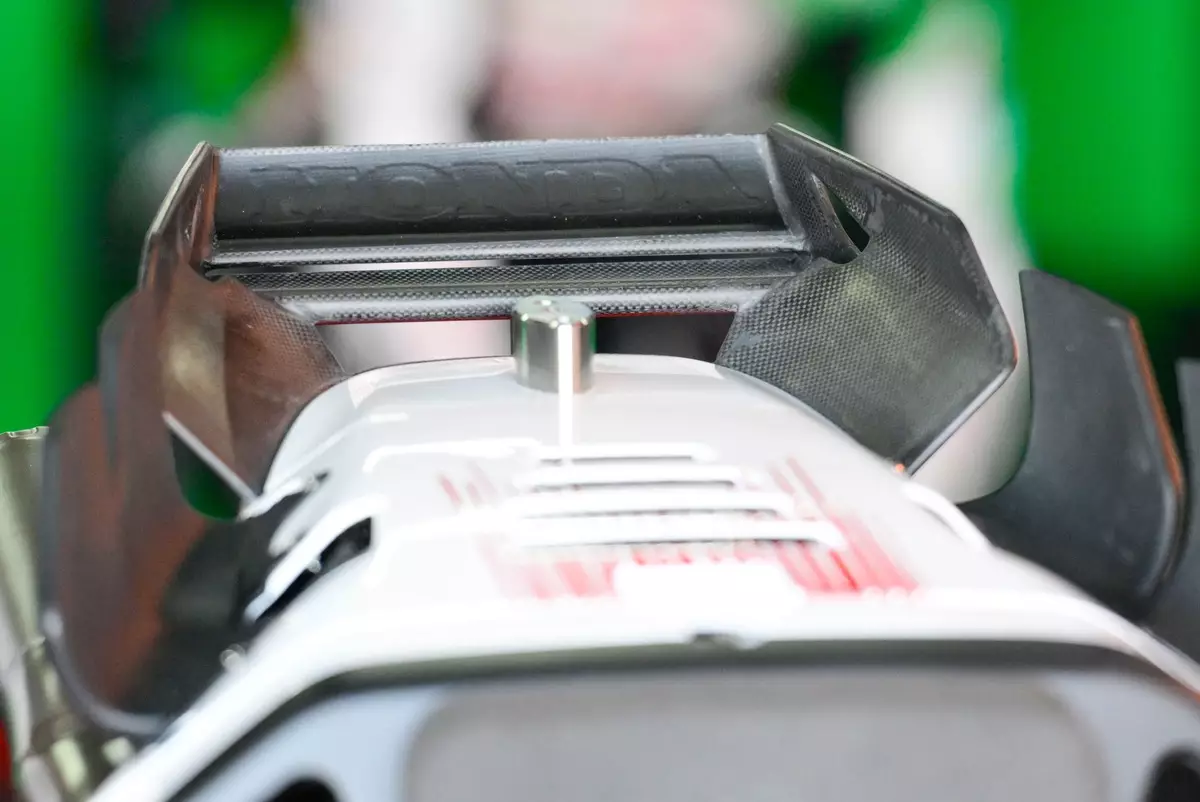In a sport where fractions of a second can dictate success or failure, the need for continual innovation in MotoGP is paramount. Honda, a significant player in this two-wheeled arena, finds itself at a critical juncture as it seeks to enhance the performance of its RC213V motorcycle. Recent tests in Buriram have showcased Honda’s commitment to improvement, particularly through the testing of new aerodynamic features aimed at bridging the gap to their competitors, especially Ducati.
The Evolution of Aerodynamic Solutions
At the forefront of Honda’s strategy is an innovative aerodynamic configuration that appears to be a response to the mounting challenges it has faced in the competition. During the latest test sessions, the team’s standout rider, Johann Zarco, experimented with a remarkably designed rear structure on his Castrol-branded machine. This enhancement builds upon earlier concepts introduced in Malaysia, integrating new wings and a rear spoiler to improve the bike’s aerodynamic effectiveness.
The latest iteration reveals the presence of two vertical flaps designed to work in unison to harness airflow dynamics. This configuration aims to push air more efficiently towards the rear, thereby optimizing the function of the tail section. Interestingly, Honda opted to discard the ‘flap tower’ previously seen, suggesting a pivot in engineering focus towards simplicity and greater aerodynamic efficiency. This shift signals Honda’s analytical approach to fine-tuning performance by enhancing downforce while simultaneously reducing drag — a dual necessity given the technical gaps highlighted in their previous outings.
The aspirational aim for Honda is to resolve a substantial speed deficit it experienced during the last racing season, which saw them trailing Ducati by approximately 7 km/h. The challenge is not solely linked to the engine’s performance but also extends to the overall design and handling characteristics of the bike. Thus, the engineering team’s explorations are multi-faceted and show a comprehensive understanding of the aerodynamic aspects that affect the motorcycle’s capabilities on the track.
Moreover, the design of the rear wing has also garnered attention. The inward bend of the lateral bulkheads is a strategic adjustment, intended to redirect airflow from the outer portions of the bike towards the center. This nuanced shift should theoretically enhance stability and grip, two critical elements that contribute to faster lap times.
The development strategy employed by Honda illustrates a collaborative effort involving multiple riders. The team harnessed the insights from various participants during the Buriram tests to gather a robust database of performance metrics. Luca Marini’s commendable sixth-place finish, with Zarco closely following, further emphasizes a collective stride toward competitive viability. The synergy drawn from their experiences helps to ensure that the updates being implemented resonate across the board, paving the way for a holistic performance upgrade.
Zarco, while pleased with some of the advancements, expressed that the team still has significant ground to cover to reach the pinnacle of MotoGP racing. The improvements noted during test runs with new tires are promising, yet there remains a notable inconsistency in performance. The stark difference in tire characteristics compared to previous tests can complicate the bike’s development, underscoring the complexity involved in interpreting data and translating it effectively into improved performance outcomes.
Looking Ahead
As the MotoGP season approaches, the urgency for Honda to capitalize on these innovations cannot be overstated. Each test session is not merely about checking boxes; it’s an essential step toward modifying their trajectory in the championship landscape. The collaborative nature of the development and the analytical mindset embedded within Honda’s engineering framework indicate a hopeful path forward.
The quest for performance excellence is ongoing, with the expectation that future tests will yield a more competitive machine capable of not just contending but excelling on the world stage. In a championship steeped in history, the evolution of the Honda MotoGP bike is as significant as the riders who operate it, reminding us that in racing, progress is the relentless pursuit of speed and precision.

